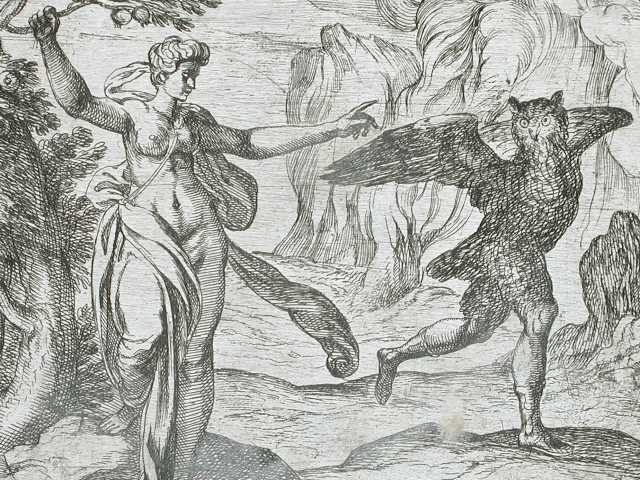Limiting Infinity. Anne Conway and the Direction of the Universe

Anne Conway rejected the existence of hell. A possible reason is theological: punishing finite sins with infinite suffering would be unjust and contradict the divine nature (see Hutton, SEP). But such an interpretation suggests that we have access to God’s volition, and even if Conway talks about God’s justice, she does not argue that we could know God’s intentions. In what follows I will argue for a metaphysical reason for rejecting hell, resulting from the way in which Conway combines eschatology, ontology, and her vision of the infinite.
For Conway, the world is spirit. What we conceive as material is simply condensed spirit. These two aspects of spirit (condensed, i.e. matter, and rarefied, which is simply spirit) can easily transform into one another. And they do. All the time. All the processes we observe are the result of this continuous condensation and rarefaction.
And here is where her eschatology becomes important: because the world is spirit, it tends to become spirit again – it tends towards rarefaction. There is, for Conway a hierarchy of beings, starting with stones and minerals, continuing with plants, animals, humans, and ending with angels. And, depending on their behaviour, there is the possibility of transformation of one into another: an amethyst will become a tulip, the tulip will become a horse, the horse will become a human being, and that human being will become pure spirit, probably an angel (32). And there is more to it: rarefaction does not stop here. Spirit can be rarefied to infinity. There is no limit for rarefaction.
However, the above is an ideal scenario. These transformations take place only if created things improve their qualities. God endowed all creatures with different degrees of perfection, and their nature is to be in continuous motion, striving for their further good. For a horse this good is to become a human being (32). And since all creatures are free, the horse might not improve its qualities and instead become a tulip. Then an amethyst. But while this is possible only for individual cases, Conway considers that it cannot happen for the entire world:
it is therefore clear that no creature can become more and more a body to infinity, although it can become more and more a spirit to infinity. And nothing can become darker and darker to infinity, although it can become lighter and lighter to infinity. For this reason, nothing can be bad to infinity, although it can become better and better to infinity. (42)
Conway does not explicitly clarify why this is the case, why corporality, darkness, and evil have limits, while spirit, light, and goodness are infinite. One possible solution might lie in looking at her theology again: she aligns good with rarefaction, and the world has to progress towards good because this is the reason God created the world. But I suspect that this would simplify her view too much. Instead, I claim that the answer resides in her ontology. For Conway the world is essentially in motion. If motion ceased, then the world would cease to exist. And while there are degrees of motion, from slow to fast, matter can never be at rest, otherwise (as already mentioned) it would cease to exist. What motion does, for Conway, is to produce rarefaction. Slowing motion down increases corporality (or materiality) – but up to a point, otherwise motion would stop and the object would vanish. At the same time, motion can be infinite. This means that, if we take the world as a whole, there is a continuous process of rarefaction, even though condensation does happen in particular cases, such as when the horse becomes a tulip.
This is to say, coming back to my initial problem of hell, that, while at one end of the world there is a limit (matter itself), at the other end, there is none. In other words, there is no hell, because nothing is beyond matter and corporality – there is nothing more condensed, or, given the good–rarefied alignment, nothing worse, than matter (insofar as the material world is the worst than can be, corporality itself is the closest Conway gets to hell). But there is a heaven, in some sense: this is the possibility of becoming more and more spiritual, to infinity. And if it might seem counterintuitive to associate creatures with the infinite, which is commonly attributed to God only, Conway has an answer to this – the dichotomy between potentiality and actuality:
For the highest excellence of a creature is to be infinite only in potentiality, not in actuality. (33)
But what are the infinite in potentiality and infinite in actuality? Conway introduces a geometrical analogy. Take a circle and a triangle. If we add another side to the triangle, and then another, and then another, and so on to infinity we will still have a figure with sides and angles. It will never become a circle. Spirits are the figures with angles and sides, while God is the circle. Employing analogies with geometrical figures is a specific feature of Conway, but that is the topic of another blog post.
Acknowledgments: Thanks to Laura Geogescu, Barnaby Hutchins, Ionut Ciobanu and Paolo Rossini for inspiring discussions or insightful comments.

